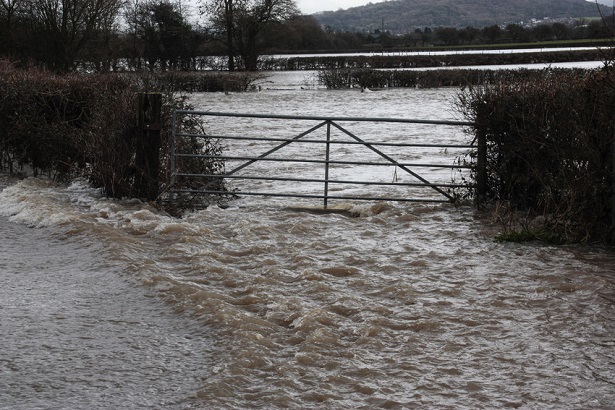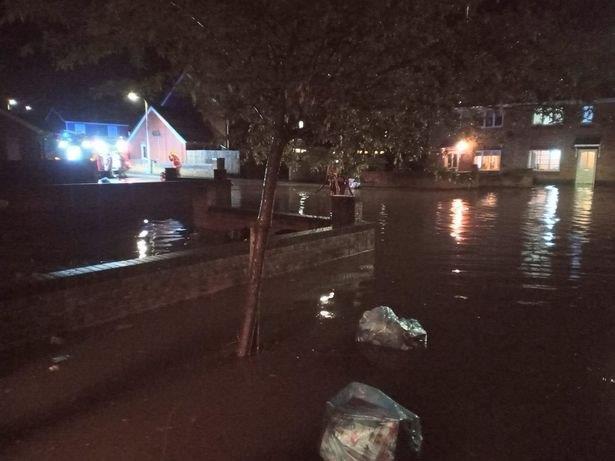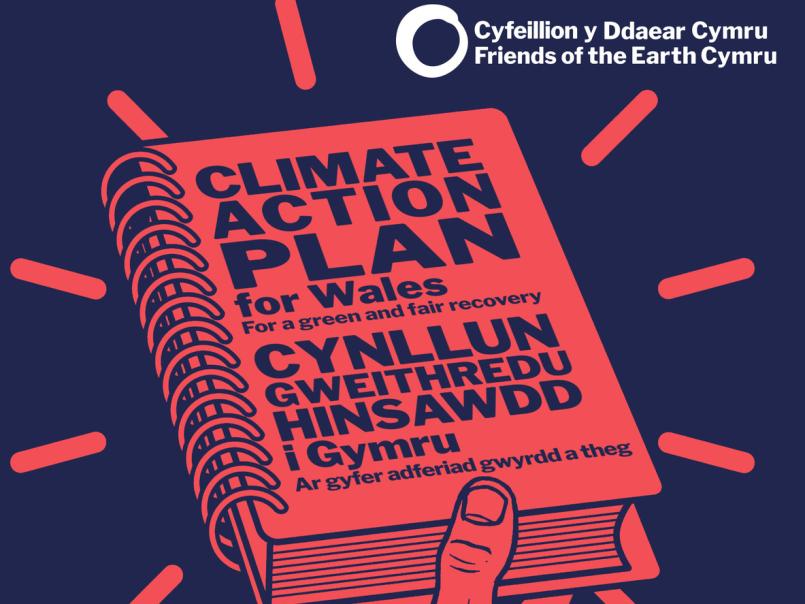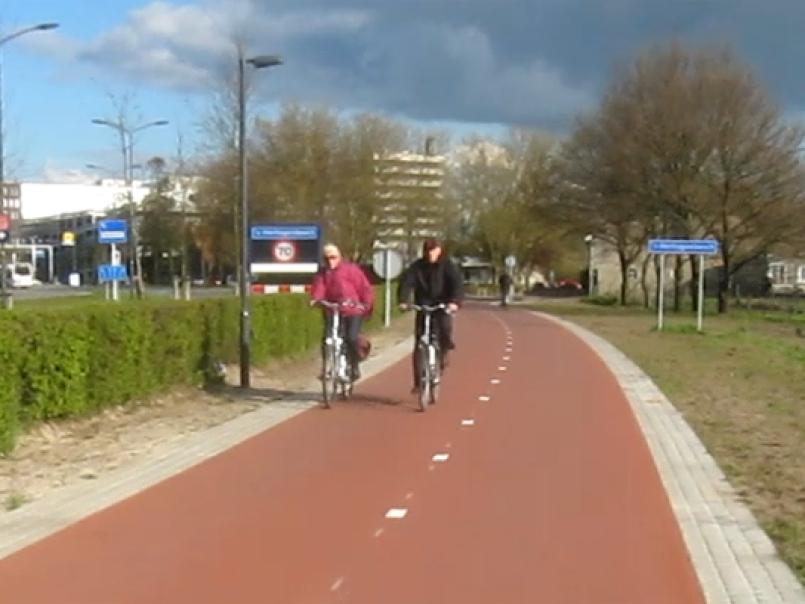Is flooding in Wales getting worse?
Summary
As climate scientists have predicted, the weather around the world is becoming windier, wetter and wilder and Wales is becoming more prone to extreme weather events too.
In the past decade, we have seen more flooding, both in our cities and in the countryside, whether from intense rainfall, increased river flow or sea surges. Even with advance warning systems in place and improved flood defences, we need to become much more resilient to flooding and make use of a broader suite of flood management tools and the planning system to address risk.
The impact is worse on lower-income households who cannot afford to make their homes flood-resistant or the insurance premiums to cover flooding, although flooding can create mental challenges that can last for years in anyone who has suffered irreparable loss.
Over 245,000 properties in Wales are currently at risk of flooding.
Natural flood management is increasingly recognised as a vital tool for flood defence and almost always achieves multiple environmental benefits. But not enough emphasis has been placed on restoring nature as part of reducing flood risk, such as the full restoration of peatlands and sea marshes, tree planting, reintroduction of beavers, and increasing green spaces and water storage in urban areas, including removing hard surfacing to enhance drainage.
The Welsh government needs to follow through on its commitment to give high priority to this approach while also supporting householders to make their homes more flood-resistant through grants and insurance schemes, to which insurance companies should also contribute – making homes flood-resistant is far cheaper than pay-outs for flood damage.

Is flooding getting worse?
Flooding causes misery and hardship everywhere. In many developing countries without the resources to build defences, and where the weather can be more extreme, the impact can be devastating. For example, in 2020 over 2,000 people died in flooding in India and over 4 million were displaced . But even in Europe flooding can cause deaths, with 240 people dying as a result of the floods that swept through Germany in July 2021.
In Wales people have died because of flooding and the country is becoming more prone to surprise flooding events. The lack of early warning systems was largely responsible for the 2,000 deaths around the Bristol Channel in 1607, the greatest loss of life from a natural catastrophe in the UK in the last 500 years. But even with today’s better flood defences and advance warning systems, flooding still has a significant impact. For example:
-
In October 2018 a man died in Carmarthenshire and flood defences were breached in what was described then as Wales’s worst flooding in decades , because of Storm Callum. Almost 200 homes were flooded.
-
February 2020 brought even more devastating flooding to Wales with successive storms and record rainfall levels. More than 3,000 properties were flooded at a cost of more than £81 million.
-
Flooding has also been seen in Pontypridd, the Rhondda Valley, Aberystwyth, the Conwy Valley and elsewhere.
-
Flooding increases mental health problems, with stress and depression increasing by 50% for affected people. A quarter of these people are still suffering at least two years after the event.
The Climate Change Committee – the UK and Welsh governments official advisor – warn that the weather is getter wetter, windier and wilder.
Why is flooding getting worse?
The IPCC – the group of the world’s scientists that advise governments – says that humans have warmed the planet at an unprecedented rate. As a result, sea levels have risen faster over the past 100 years than for at least 3,000 years and that the frequency and intensity of heavy precipitation events have increased. They say that with every increment of global warming, extreme weather events will get progressively worse and more frequent . This is because a warmer atmosphere can hold more water vapor and release it in more intense downpours.
Over the past 40 years, rainfall has been steadily increasing in the UK and it is now more than 7% wetter than it used to be . Sea levels have risen by 1.6cm. These changes don’t seem like much, but averages mask extremes. It is the intense rainfall events and storms in both summer and winter that cause the most damage.

In the future, we are likely to be facing even more dramatically extreme weather. Reduced arctic ice cover may lead to radical changes to the jet stream – which is a major influence on Wales’s weather - or warming could lead to much greater sea level rise of 1-2 metres by 2100 as icecaps melt leading to significant loss of land to the sea and much greater levels of coastal flooding.
But additional flooding is not just a result of climate breakdown. We have also damaged Wales’s resilience to flooding by degrading the environment. By draining peat bogs, removing hedgerows, destroying salt marshes, concreting green spaces in urban areas and building on flood plains, we have undermined the ability of the natural environment to cope.
How many homes are at risk and who is most vulnerable?

The Welsh Government says over 245,000 homes and properties are at risk from flooding and coastal erosion . Until recently home building on flood plains was still allowed, as in England, but new Welsh guidance says this must not happen in areas of high flood risk. The government has also issued a flood map for planning .
Professor Sarah Lindley and colleagues at Manchester University are working with Friends of the Earth to map which communities in Wales are vulnerable to flooding - and extreme heat - and which of these are most socially vulnerable due to their demographics (e.g., age, income, disability, etc). This research will be published in 2022.
Wherever it happens, flooding is a tragedy for families and communities. Even though most people survive all but the most extreme floods, property damage and the loss of irreplaceable personal effects such as photographs, keepsakes, furniture, and ornaments, let alone pets or farm animals, can cause mental challenges that last for years.
Can nature restoration help?
Nature restoration can help protect land and properties from flooding and reduce but not eliminate the need for flood defences, such as walls and barriers.
This ‘natural flood management’ (NFM) approach is increasingly recognised as a vital tool for flood defence. Natural Resources Wales has worked with JBA Trust to publish maps to support the delivery of NFM, identifying potential locations for such measures in a catchment. The Scottish government has published a handbook on NFM . And in England, the Environment Agency in England provides numerous examples of these natural flood management approaches in action . Examples of NFM include:
Restoring peatlands and soils – upland peatlands can act as giant sponges soaking up rainfall and releasing it slowly over time. But many of these peatlands have been degraded through drainage to make the habitat more suitable for rearing grouse for shooting. Restoring peatlands and other soils also aids wildlife and the storage of carbon.
Planting more trees – Wales is one of Europe’s least wooded nations. The Welsh government conducted a ‘deep dive’ into trees and timber in Summer 2021 which resulted in a commitment to plant 43,000 hectares of woodland by 2030 and 180,000 by 2050 (around half of what Friends of the Earth has called for). This is to be followed up by a Woodland for Wales Action Plan in Spring 2022. This new plan should include action to plant more trees beside rivers and waterways. Trees can provide ready material for installing leaky dams, branches across a stream holding back much of the water but allowing it to drain through the leaky dam over time, as well as slow the flow of water and increase soil capacity to absorb water.
Creating more water storage capacity - the uplands and the lowland floodplains can store the large volumes of water that come with storms. Well managed floodplains can also be a haven for wildlife. This will only require losing very small amounts of agricultural land. More water can also be stored by building more ponds and lakes. In urban areas water from storms can be stored in water butts, including potential Wi-Fi enabled water butts that empty ahead of a storm. New build homes should incorporate water stores.
Restoring the natural flow of rivers – many rivers have sections where their flow has been unnaturally straightened and/or concreted riverbanks have been installed. This can speed the river flow and cause flood risks further downstream. Natural and restored riverbanks act like sponges by absorbing excess water, and river meanders can store more water.
Bringing back beavers - as brilliant engineers, beavers are another natural ally in cutting flood risk, by building dams and reducing the volumes of water reaching communities downstream. A University of Exeter study shows how beavers increased water retention on the land reducing the risk of flooding downstream.

Increasing soak-away capacity – much of our urban areas have been concreted over. As surface water flooding is the greatest risk in many areas it makes sense to prevent further concreting over and replace existing concrete with more porous materials where practicable.
Examples of where natural flood management has been practised include:
-
Swansea Vale: a flood storage area has been created which as well as lessening flooding also has created a natural wetland area which is green space for local people to enjoy and a new habitat to support wildlife.
-
Ystradgynlais: leaky dams, straw bale dams and willow structures have been installed to slow down the flow of water a small watercourse in Ystradgynlais. This has increased wildlife in the area, reduced peak flows of floodwaters, and reduced erosion of the embankments.
Are the government’s plans good enough?
The scale of floods in the future will be determined by governments policies and actions to reduce greenhouse gas emissions to slow climate change. In the UK as a whole, as in other parts of the world, there is a massive gap between pledges to reduce emissions and policies to do so. The Labour Welsh government has agreed on a deal with coalition partners Plaid Cymru to explore the possibility of reaching net zero greenhouse gases by 2035. This is extremely ambitious. It has also joined the international Beyond Oil and Gas Alliance. These welcome commitments need to build on the existing Net Zero Wales plan , and it may be that the ability to deliver is hampered by a lack of powers and finance, which are controlled by the Westminster Government.

But however successful Wales is in cutting emissions, it must also be much more resilient to extreme weather events – flooding, extreme heat, and high winds. This means spending money on flood defences (including Natural Flood Management, but also means ensuring at-risk householders are prepared for flooding and able to rebound quickly.
The reality is poorer households are less able to invest in their properties to make them more flood-resistant (e.g., flood gates) and resilient (e.g., easier to clean and dry out). Some are less able to respond when flooding occurs if they are disabled or frail due to age or illness. And many are unable to bounce back after floods – UK-wide figures suggest around 50% of all renters may not have home contents insurance , and this rises to 61% of low-income renters .
The Welsh government is spending record amounts on flood defences (see below), but much more is needed to help vulnerable at-risk households make their homes flood-resilient and ensure they are adequately insured so they can recover from a flood.
More grants for flood resistance and resilience
Friends of the Earth believes that more grants should be available for people living in high-risk flood areas to make their homes more flood-resistant and resilient. Currently, the Welsh government does not offer grants for individual householders to fit resistance and resilience measures. Instead, it provides money to Risk Management Authorities (councils and others) to coordinate installations at a community level, because they argue this is more cost-effective . While this may be the case, the level of funding remains low, resulting in only 594 homes protected through this scheme in 2020-21.
The insurance industry should also be contributing to a UK-wide programme of making homes flood resistant and resilient, not least because prevention is much cheaper than the cost of flood damage recovery. On average insurers pay out £50,000 per property for flood damage , whereas the cost of basic flood resilience is around £4,000 while more complete flood resilience is around £12,000 . The UK government says it is considering how the insurance industry can contribute through the Flood Re Scheme , which is legislated for at a UK level.
Landlords should also be required to install flood resistance and resilience measures for rental properties that are at high risk of flooding. It is unclear if the Welsh Government has the powers to require this.
Better insurance cover
Cheaper house contents insurance is made available to low-income householders in flood-prone areas through a scheme called Flood-Re. This UK-wide scheme raises a levy on all household insurance and uses this money to both partially subsidise insurance in areas at high risk of flooding and provide a pot of money for insurance company pay-outs after flood events. But insurance is still more expensive for properties at risk of flooding than those not at risk. This can lead to lower-income households in particular opting for home insurance that doesn’t cover flooding or no insurance at all.
As recommended by the UK government-commissioned 2020 Blanc Review into flooding insurance , the government needs to make insurance more affordable for low-income householders in flood-prone areas, particularly for low-income tenants, and require landlords to have building insurance that means they can rehouse tenants for a period if flooding occurs. The UK government has said it will not require lower insurance premiums but will look at other unnamed approaches for increasing insurance uptake.
A greater focus on nature in flood defence
So-called ‘hard flood defences’, such as flood defence walls, are needed to protect properties. But historically not enough emphasis has been placed on restoring nature as part of reducing flood risk, such as the full restoration of peatlands ( 90% of which are degraded ) and sea marshes, tree planting, reintroduction of beavers, and increasing green spaces and water storage areas in urban areas, including removing hard surfacing to enhance drainage.
The Welsh government has provided £36million to councils and Natural Resources Wales in 2020-21 in capital grants to help them invest in new defences, maintenance works and natural flood management schemes. This was a record amount in a single year. Together with money for on-going spending this resulted in a grant of £65.4 million, which is slightly more than the per capita spend in England (£20.82 vs £17.85 per person). It has yet to announce funding for future years. The National Strategy for Flood and Coastal Erosion Risk Management in Wales, published in early 2021, puts an increased emphasis on Natural Flood Management (NFM), requiring every flood alleviation scheme to consider it and report to Welsh Ministers. A separate £2 million was allocated to NFM in 20-21 . Whether this increased emphasis results in much greater use of NFM remains to be seen.
Flood defence spending is one part of the flood resistance and resilience story. But the government must also address the lack of permeable ground in urban areas. Since 2019 the Welsh government has required new build developments to ensure hard surfaces are permeable to reduce surface water run-off. This is called Sustainable Drainage. In areas that are already built, sustainable drainage can be retrofitted by creating more urban green spaces, putting green roofs on buildings, and restricting the amount of hard surfacing of gardens and driveways. As a by-product, it would also reduce the overloading of sewerage systems - which often combine sewage from our homes with drainage water from streets - and the number of times raw sewage is pumped into our rivers through combined sewer overflows.
What needs to happen?
The Welsh government accepts more needs to be done . Friends of the Earth is calling for:
-
The Welsh Government should increase funding to Risk Management Authorities so that more homes, particularly low-income homes in high-risk areas from flooding, can be made more flood-resistant and resilient. The insurance industry should contribute to the costs of this programme through the Flood-Re Scheme.
-
The cost of contents insurance for low-income householders at high risk of flooding should be further reduced through the Flood-Re scheme. It should not be more expensive for them to insure their home than an equivalent home which is not flood prone (except where they refuse to fit fully funded flood resistance and resilience measures). This will require UK government action. These householders will have contributed least to climate change which is increasingly responsible for the flood risks they face.
-
Natural Resources Wales must follow-up its vocal support for natural flood management by giving high priority to this approach in its forthcoming Flood Risk Management Plan for Wales , expected in Spring 2022. This should include recommendations for the Welsh government, and where necessary the UK government, to take action to remove barriers to implementation (for example, financial barriers that prevent landowners turning over land for reforestation or carrying out peat restoration or planning or cost barriers to creating green spaces for sustainable urban drainage in urban settings). The forthcoming update to the Woodland for Wales Action Plan also needs to give a high priority for tree planting to reduce flooding.



